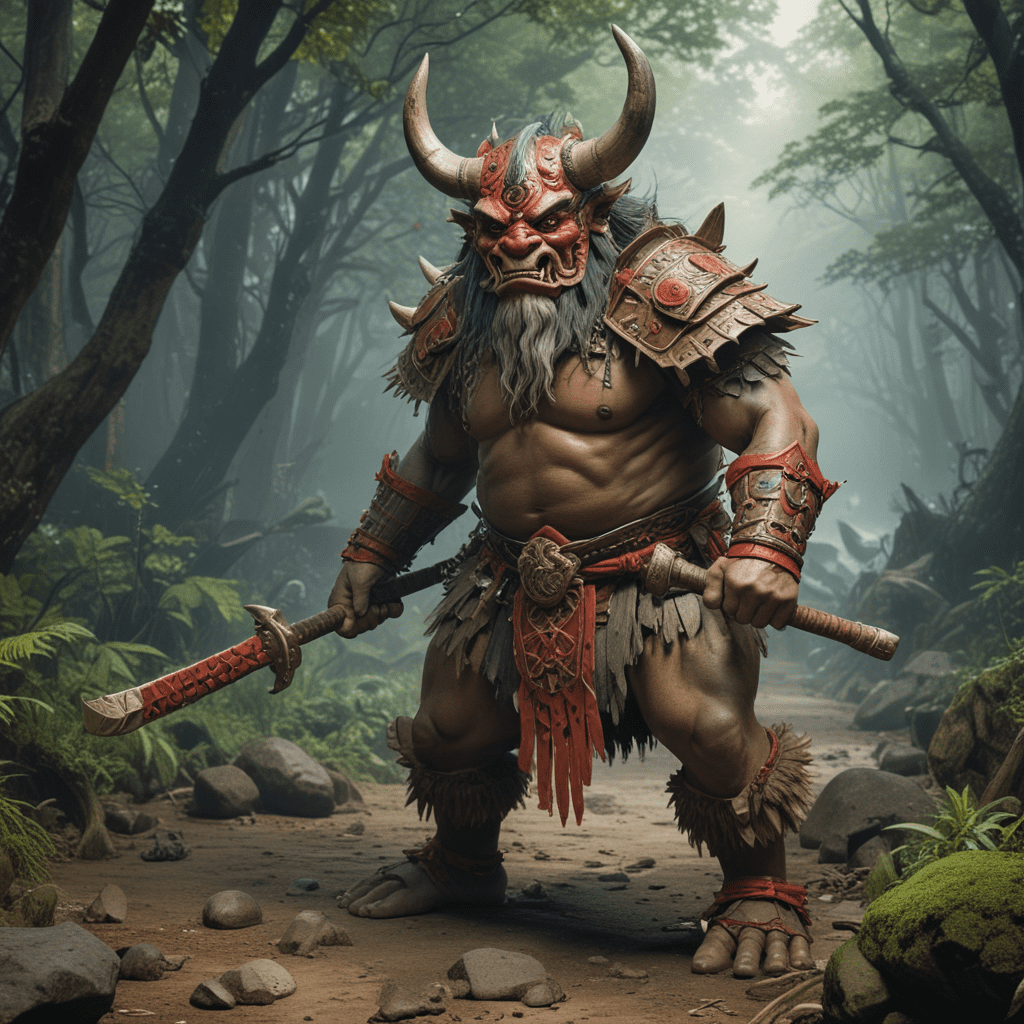The Legend of the Namahage: The Ogres of Oga Peninsula in Japanese Folklore
I. Introduction:
The Namahage, fearsome ogres from Japanese folklore, have their roots in the Oga Peninsula, a remote and rugged region in northern Japan. These legendary creatures play a pivotal role in an ancient ritual designed to ward off evil spirits and encourage good behavior within the community.
II. The Oga Peninsula:
The Oga Peninsula, jutting out into the Sea of Japan, is a sparsely populated region known for its dramatic coastline and traditional way of life. The peninsula's isolation has helped preserve many ancient customs, including the Namahage ritual.
III. The Namahage Ritual:
Every New Year's Eve, young men from the Oga Peninsula don fearsome Namahage costumes and go from house to house. They engage in a ritual performance that involves threatening the occupants with a wooden knife and giving a series of warnings. The ritual is believed to bring good fortune and scare away any evil spirits that may be lurking.
IV. The Namahage Garb:
The Namahage costume is designed to be as intimidating as possible. It consists of a straw coat, a large straw hat, and a fearsome mask carved from wood. The mask features exaggerated eyes, fangs, and a long, pointed nose. The Namahage also carry wooden knives and wear bells around their ankles to create a cacophony of noise.
V. Namahage Chants and Warnings:
The Namahage enter each house with a series of threatening phrases, such as "Are there any lazy children here?" or "Are there any disobedient children here?" They inspect the house and issue warnings to any occupants who have misbehaved. The Namahage may also engage in a mock fight with the occupants, using their wooden knives and making loud noises.
VI. The Role of Children in the Ritual:
The Namahage ritual has a profound impact on children within the Oga Peninsula community. The fear of encountering the Namahage serves as a powerful deterrent against misbehavior. Children are taught to obey their elders and follow the rules of the community in order to avoid being targeted by the ogres. The ritual instills discipline and encourages good behavior, shaping the moral values of the younger generation.
VII. The Namahage as a Cultural Symbol:
Over the years, the Namahage have become a symbol of the Oga Peninsula and a source of pride for its residents. The ritual is a unique and captivating spectacle that attracts tourists from all over Japan and the world. Namahage masks and other souvenirs are popular collectibles, and the ritual has been featured in numerous films, documentaries, and other media. The Namahage serve as a reminder of the peninsula's rich cultural heritage and its deep connection to tradition.
VIII. The Social Function of the Ritual:
The Namahage ritual serves an important social function within the Oga Peninsula community. It reinforces moral values, promotes social harmony, and strengthens community bonds. By collectively participating in the ritual, residents reaffirm their shared beliefs and traditions. The ritual also provides an opportunity for the community to come together and celebrate their unique heritage.
IX. Variations and Regional Differences:
While the Namahage ritual is primarily associated with the Oga Peninsula, variations of the tradition exist in other parts of Japan. In some regions, the ogres are known by different names, such as "Amahage" or "Namahage." The costumes, masks, and rituals may also vary, reflecting local customs and folklore. These regional variations showcase the diversity and richness of Japanese folklore.
X. Conclusion:
The Legend of the Namahage remains an enduring legacy of Japanese folklore, deeply rooted in the traditions and beliefs of the Oga Peninsula. The Namahage ritual serves as a bridge between past and present, preserving ancient customs while simultaneously shaping the moral and social values of the community. As a cultural symbol, the Namahage represent the unique identity of the Oga Peninsula and continue to fascinate visitors from around the world.
FAQ:
Q: Are the Namahage real?
A: The Namahage are legendary creatures from Japanese folklore. They are not real in the literal sense, but they have a profound cultural significance and are believed to bring good fortune and ward off evil spirits.
Q: Why do the Namahage wear straw coats?
A: The straw coats symbolize the rice farmers of the Oga Peninsula. Rice farming is an important part of the region's culture and economy, and the Namahage costumes are a way to honor the farmers' hard work.
Q: Is the Namahage ritual scary?
A: The Namahage ritual can be frightening for children, but it is primarily intended as a playful and educational experience. The ogres are not meant to cause harm, and they ultimately bring good fortune to the households they visit.




